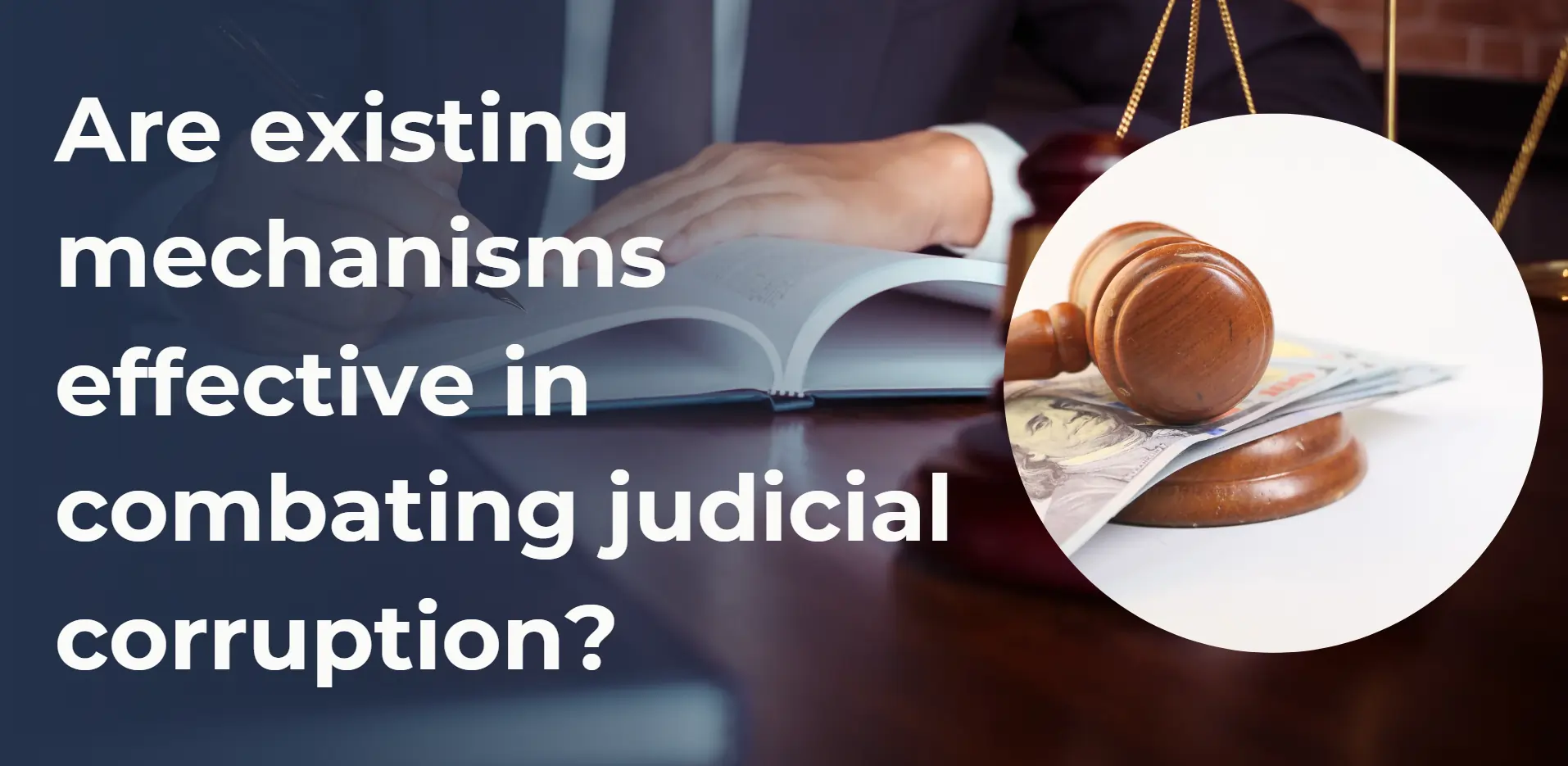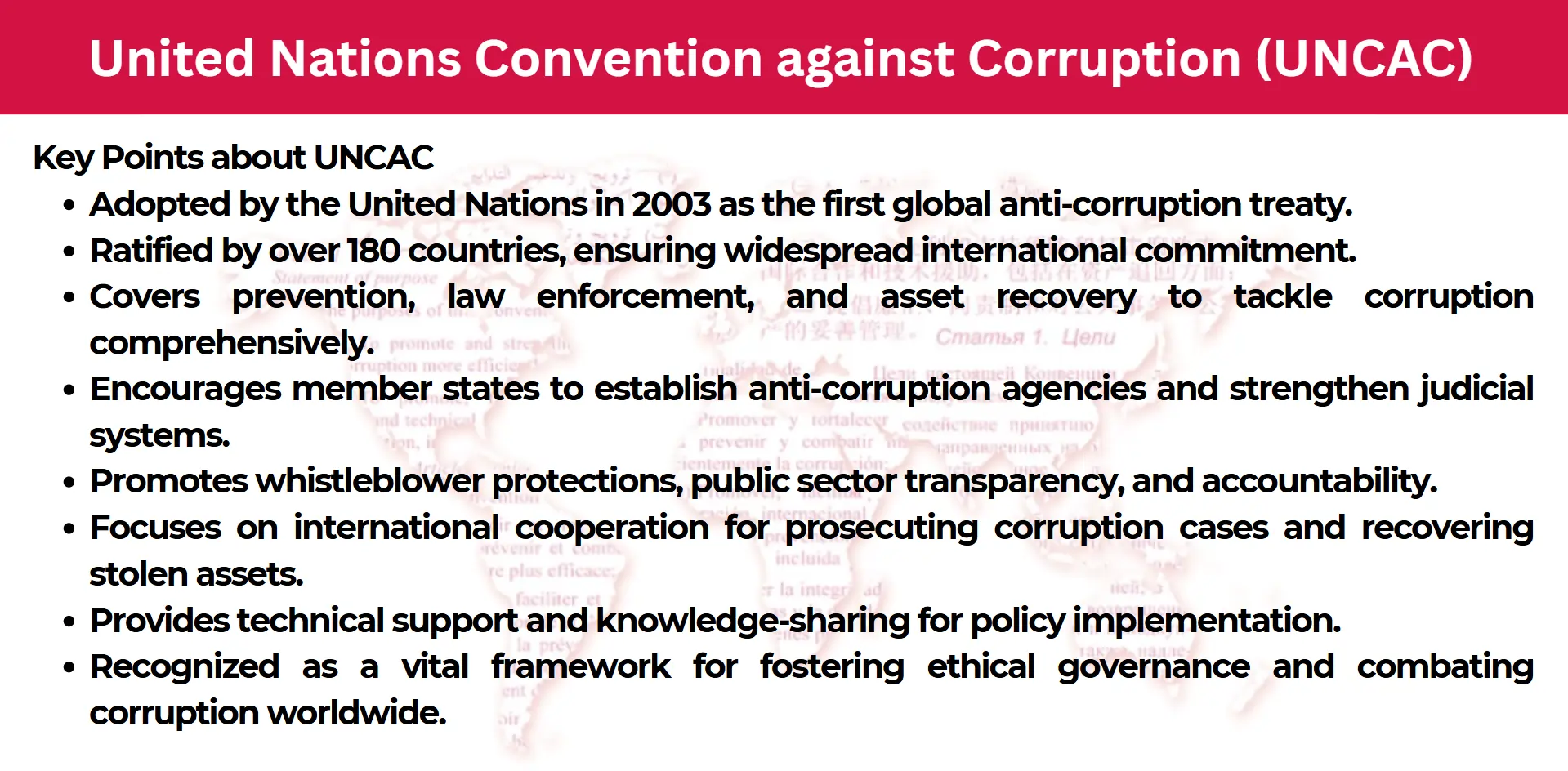This article evaluates current strategies to fight judicial corruption by demonstrating the necessity of unified responsibility and modern methods to achieve judicial systems based on integrity.

Judicial corruption destroys fundamental justice beliefs along with legal equality and constitutional law principles which together represent a major risk to societal operations across the world. Judicial corruption appears through different methods which include bribery together with favouritism and abuse of discretion while simultaneously breaking down public faith in the judiciary. Different systems for judicial corruption prevention including accountability checks, anti-corruption organizations and international agreements demonstrate some effectiveness but need further assessment in their effectiveness. This Article examines the functionality of these systems by evaluating their advantages and disadvantages in addition to their obstacles during judicial corruption prevention. The article investigates judicial corruption reduction effectiveness by using real-world examples alongside international cross-filed studies to determine whether current methods succeed in stopping corruption or new solutions are necessary.
Understanding Judicial Corruption
Judicial corruption consists of immoral judicial system activities that degrade both equity and institutional integrity as well as undermine public trust. Such corruption functions as an aggressive force that weakens democracy while hindering justice operations while affecting society in its core elements.
Definition and Forms of Judicial Corruption
Judicial corruption encompasses illegal acts such as bribery, favouritism, nepotism, and abuse of judicial discretion. Judges receiving money to make unfair rulings constitutes bribery but favouritism and nepotism emerge from giving preferential treatment to connected persons in legal cases. Judicial abuse of discretion takes place when judges misuse their authority to pursue personal political motives.
Causes of Judicial Corruption
Judicial corruption emerges due to various causes. The absence of accountability mechanisms together with insufficient oversight permits corrupt conduct to grow unchecked. Unacceptable work environment and insufficient payment for officials can lead to destructive unethical practices. Judicial corruption frequently happens because governments frequently use their power to direct court proceedings according to political needs. The combination of weak anti-corruption law enforcement together with cultural preferences leads to the development of system-wide corruption.
Impacts of Judicial Corruption
The multiple effects of judicial corruption extend to severe levels. The public loss of faith in the legal system emerges due to judicial corruption which decreases popular trust in the concept of justice. Unfair rulings emerge from corrupted legal processes because of judicial corruption that causes injuries to victims while helping wrongdoers succeed. Judicial corruption creates various cumulative negative effects that prevent economic growth and simultaneously maintain social inequalities while decreasing foreign direct investments.
Overview of Existing Mechanisms
The fight against judicial corruption resulted in various worldwide mechanisms being developed. Open systems have been created to monitor the judicial system for accountability purposes and protect legal system integrity while building public confidence.
Internal Mechanisms for Judicial Accountability
Judicial bodies use internal monitoring structures to regulate unethical professional behaviour among their members. The judicial system utilizes three main accountability tools consisting of ethical standards together with disciplinary assessment bodies and performance assessment mechanisms. Judicial conduct stands based on standards in codes of conduct which enables disciplinary entities to investigate corruption, accusations and determine suitable penalties when warranted. Peer reviews act as essential components to monitor irregular behaviour because they establish accountability throughout the judiciary system.
External Oversight Mechanisms
The oversight of judicial conduct depends on external forces including anti-corruption bodies together with whistle-blower protection safeguards and the broad-eyed monitoring of media and civil society organizations. Judicial misconduct investigations together with offender prosecutions operate independently from judicial institutions through the work of anti-corruption agencies. The protection of whistle-blowers through laws enables people to make corruption reports safely thus achieving better transparency in judicial operations. Civil society organizations along with media outlets function as watchdogs through their continuous efforts to reveal judicial malpractice while asking for judicial reform measures.
Global Frameworks and International Conventions
The United Nations Convention against Corruption (UNCAC) operates at a global level to support international cooperation against judicial corruption through its provided guidance. The United Nations Environment Programme (UNEP) establish a set of guidelines that help member states enhance their joint efforts to fight corruption impacting multinational judicial processes. Each country that adopts these frameworks draws advantages from mutual resource sharing to boost their operational systems.

The progress made through these mechanisms continues to face limitations when executing them effectively and properly. The development of these initiatives must be strengthened while their constraints must be resolved for the judiciary to become fully incorruptible.
Strengths of Existing Mechanisms
Mechanisms created to combat judicial corruption proved effective by establishing vital factors that build judicial systems in different countries worldwide.
Promotion of Transparency and Digitization
Judicial processes achieve their main strength from using transparency measures alongside digital modernization strategies. To promote transparency most judicial establishments have implemented e-filing combined with digital case management and public Internet access to court records. The implemented tools lower human factors and increase visibility to prevent corrupt behaviour. The practice of open hearings in court provides accountability elements through public exposure of judicial activities.
Empowerment through Whistle-blower Protections
Protection systems for whistleblowing serve as a successful method to combat judicial corruption. The implemented measures give employees the confidence to report unethical conduct by shielding them from punishment. The implementation of comprehensive whistle-blower frameworks in nations leads to an increase in probe of corruption cases. Whistle-blower protection laws which offer safety measures to anonymous whistle-blowers have resulted in exposing and holding corrupt officials accountable. The incorporation of these provisions helps build trust between the public and the judiciary when it comes to judicial corruption prevention efforts.
International Cooperation and Best Practices
The United Nations Convention against Corruption (UNCAC) together with other global frameworks enables nations to work together towards judicial corruption challenges. International initiatives encourage nations to share useful practices together with support systems and specialized knowledge which results in better operational models. India operates an exceptional anti-corruption program that functions to spark reformative measures across different legal systems. International fluid partnerships make certain that transnational judicial corruption cases receive proper prosecution thus establishing worldwide accountability.
The current methods demonstrate effectiveness in controlling judicial corruption because of their existing strength. Prolonged dedication to correct existing weaknesses alongside the adoption of new solutions will preserve our on-going advancement.
Limitations and Challenges
The existing instruments which fight judicial corruption encounter various obstacles that mask their performance effectiveness. Multiple institutional elements along with structural components and socio-political elements typically strengthen the obstacles to effective prevention and control.
Weak Implementation and Enforcement
The main restriction that hampers anti-corruption efforts arises from irregular implementation and weak enforcement of established measures. Selection-based implementation of laws and regulations introduced by many countries undermines their ability to hold decision-makers accountable. Certain individuals along with selected social groups manage to avoid regulation enforcement because of their political connections or social status. These mechanisms face credibility issues due to insufficient punishment of criminals.
Resistance to Reform and Institutional Barriers
Resistive attitudes toward judicial reform emerge from powerful vested interests along with entrenched customs. The judiciary faces internal resistance when implementing new accountability systems because judges show passive resistance toward adopting new accountability frameworks. The judicial system faces increased difficulties when political authorities manipulate both judicial results and protect corrupt public officials in service of their political agenda. Judicial independence suffers when these barriers exist because they block essential changes from taking place.
Resource Constraints and Overburdened Mechanisms
Limited funding availability makes it difficult to successfully fight corruption. The oversight bodies together with the anti-corruption agencies work with insufficient budgets and personnel which limits their power to investigate judicial corruption incidents. Due to excessive workload courts throughout many nations struggle to put corruption cases at the forefront of their priorities. The delay in justice caused by backlog enables corrupt activities to continue without proper supervision.
The various system constraints require comprehensive reforms for effective solutions to existing challenges. Efforts to resolve problems effectively need the strengthening of enforcement along with the promotion of judicial independence and sufficient resource allocation.
Case Studies and Examples
Many case studies demonstrate how judiciary corruption prevention works while showing examples of the difficulties faced in this process. Such studies provide meaningful information about present systems and specify their weaknesses and strengths.
Success Stories: Singapore's Judicial Reforms
Singapore operates as an exemplary nation which successfully fights judicial corruption at the global scale. The country has reached spectacular outcomes by maintaining rigorous anti-corruption law enforcement and an open judicial system. Effective anti-corruption measures include the CPIB and competitive judicial compensation. Through these reforms public confidence in the judiciary has grown while the organization maintains its solid integrity foundation.
Persistent Challenges: Judicial Corruption in India
Indian courts succeed in their operations but struggle to address corruption effectively throughout the judicial system. The judicial system exposes its weaknesses through major controversies that include past bribery scandals involving previous judges. The Judicial Accountability Commission's creation has failed to achieve effectiveness because political interference together with bureaucratic delays creates obstacles to progress. Increased judicial enforcement together with structural reforms must become immediate priorities due to these obstacles.

Lessons from Rwanda's Recovery
Rwanda experienced substantial changes in its judicial system following genocide because the country acted to remove corruption from its institutions. Public confidence returned due to the combination of transparency initiatives and judge ethical training and community participation in Gacaca trials. Context-based solutions demonstrate how effectively they can defeat corruption.
Nations around the world choose various strategies to handle judicial corruption which demonstrate effective solutions as well as on-going problems.
Recommendations for Improvement
Judicial corruption control becomes more effective by reinforcing current mechanisms and applying new methods which target the problem. Such efforts to fight corruption must center on enhancing public transparency along with established systems of accountability and building wide-scale trust.
Strengthening Judicial Oversight and Accountability
The courts need increased independence and authority to conduct investigations as well as take action against corrupt judges and staff. Transparent systems based on well-funded independent agencies will provide unbiased enforcement through established procedures. The judiciary should develop ethical codes which complement periodic integrity training for judges along with court personnel to build judicial accountability.
Leveraging Technology for Transparency
Judicial corruption in judiciary systems can be effectively battled by the strong capabilities of technology. The deployment of block-chain systems in record management protects data from modification while ensuring open visibility across the entire system. AI-based software assists both detection of suspicious acts and helps achieve blind case distribution. Digital law implementation practices which establish online court rooms and verify court decisions allow citizens to closely monitor the legal system thus reducing corruption possibilities.
Promoting Public Participation and Awareness
The un-corruption of the judicial system depends on public involvement. Public education projects instruct people about legal rights which enable them to identify corruption events. Stronger whistle-blower protections and active citizen watchdog programs create conditions which boost citizen oversight abilities to deter unethical behaviour. The media along with civil society organizations need sufficient resources to operate as independent judicial monitoring bodies.
Enhancing International Collaboration
Significant world-wide collaboration with an emphasis on international relationships must serve as the primary approach to fight judicial corruption. The UN Convention against Corruption needs revision to create better accountability systems which will help members exchange knowledge effectively. The development of multinational tracking systems across borders enhances global deterrence abilities for prosecuting corruption during international cases.
The judicial systems must adopt these proposals as a method to address their current weaknesses because they will support sustained transparency and maintain integrity.
Conclusion
Judicial corruption maintains its status as a worldwide challenge which simultaneously harms judicial structures and decreases public trust within legal systems. The platforms demonstrate strong effectiveness in transparency advancement and international collaboration, accountability measures but face implementation hurdles from inadequate enforcement capacity, funding limitations and institutional obstacles. To preserve its role as a justice institution based on integrity the judiciary requires improvement of existing systems with technological advancements and enabling public participation. Achieving equal justice requires collaborative reform and team effort along with worldwide collaboration to protect the judicial system from corruption.